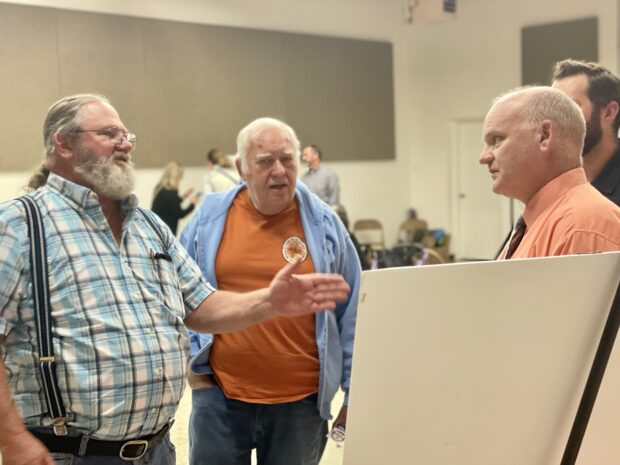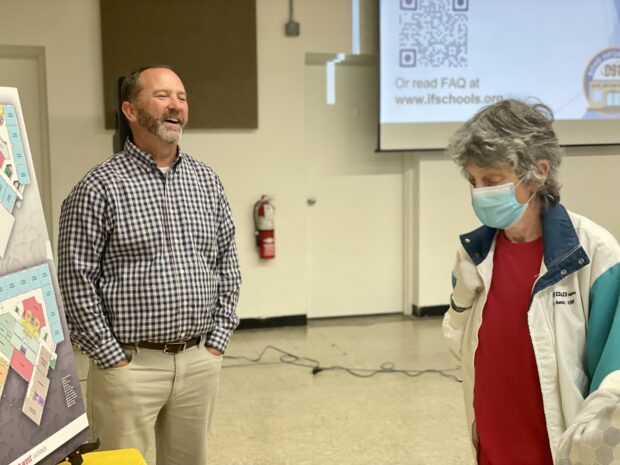Their numbers were few, but their concerns were many.
Around a dozen patrons showed up Tuesday for the early portion of the Idaho Falls School District’s first of four open houses aimed at sharing information about its record-breaking $250 million bond issue set for the November ballot. The event, held at the Idaho Falls Activity Center, ran from 6:30 to 8:30 p.m., with patrons coming and going throughout the evening.
Several of Tuesday’s early attendees acknowledged the need to address aging facilities but expressed concerns about the measure’s timing and price tag.

“It’s a lot,” said patron Jeff Hayes, who visited booths with information on the proposed upgrades during the event. “It’s just not a good time for the district to come out with a grandiose plan for new schools.”
If approved, the measure would be the largest general obligation bond in Idaho history, and would fund construction of a new Idaho Falls High School, two new elementary schools and major renovations to Skyline High School.
District leaders say the measure is needed to address a range of festering overcrowding and safety issues across the district.
But the price tag has brought sticker shock to some.
Hayes thinks a measure closer to $100 million is “more realistic” — something that could include upgrades and improvements to existing schools.
But even $100 million has proved challenging for Idaho Falls. In 2017, the district floated a bond to rebuild Idaho Falls High and remodel Skyline High, along with other upgrades. The price tag then: $110 million. The measure failed to meet the needed two-thirds supermajority of votes for an Idaho bond issue to pass. A year later, a similar measure failed.
Four years and a global pandemic later, needed upgrades, as the district sees them, have only expanded. And costs have only risen, bringing the new measure to levels Idaho has never seen.
Idaho Falls superintendent James Shank made cost a key part of his opening remarks Tuesday, infusing his words with a sense of urgency.
As the last few years have shown, said Shank, “(c)osts to build schools don’t go down. They typically go up.”
In short, if $250 million seems like a lot now, it could be more later.

And the district is focused on softening the financial blow to patrons, Shank added, by paying off other outstanding bonds before the new measure would hit the books.
Savings from early payoffs will amount to around $133 per $100,000 of taxable property, the district’s website reads, leaving taxpayers to pay about $100 per $100,000 of taxable value if the new measure passes.
Shank encouraged patrons to access the district’s impact calculator to see how the measure would impact them individually.
Still, for patrons like Hayes, replacing paid-down debt with more debt is a turn-off.
“They’re paying one thing off just to hit us with another,” Hayes told EdNews.
Others are more supportive of the measure. Melissa LaPray, who has a high schooler in the district, said she’s leaning toward a yes vote — despite voting no on the 2017 and 2018 measures.
Participating on a district committee exposed some of the district’s challenges more clearly, she said, from overcrowding at Idaho Falls High to safety concerns stemming from over two dozen exterior doors at Skyline High.
Trust remains a big concern for LaPray, who wants to know that the district would handle such a windfall of cash responsibly.
For LaPray’s mother, Susan Jacobson, who is retired and on a fixed income, it all boils back down to cost.
“I could support something more practical,” Jacobson told EdNews. “I’m here to be convinced.”
